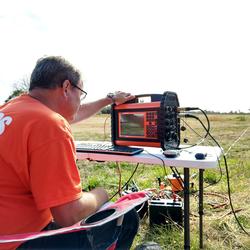Groundwater and Streamflow Information
Groundwater and surface water are among the Nation’s most important natural resources. The USGS provides unbiased, timely, and relevant information, studies, and data about water resources of the Nation. The NYWSC maintains a network of more than 300 surface water and 650 groundwater monitoring stations across New York State; over the years, the USGS has collected water-resources data at approximately 1.5 million sites in all 50 States, the District of Columbia, Puerto Rico, the Virgin Islands, Guam, American Samoa, and the Northern Mariana Islands. The data collected at the various sites are synthesized in State-level, interstate, and international studies to evaluate resources not only in one State but also other States and countries that might be affected or may influence the condition of surface water and groundwater. The data collected are used in studies of water supplies, groundwater contamination, flooding, water stored in ice and the oceans, and the effects of climate and land use change and manmade influences.












